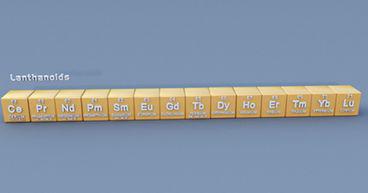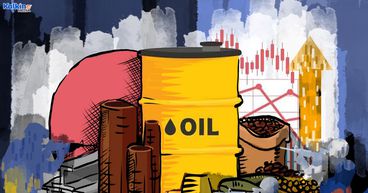Aluminium
2379.55 USD/Mt -129.45 (-5.16%) (Last updated - April 07, 2025 05:28 PM UTC )2460
2417
2428
2311 - 3966
-3.29%
About
| Performance USD/oz | Change |
| 5 Day | 1.84% |
| 1 Month | 0.59% |
| 3 Months | -4.3% |
| 6 Months | -3.29% |
| 52 Week | -3.29% |
April 07, 2025 05:28 PM UTC
Data Powered by Stockdio. Data delayed by 5 minutes unless otherwise indicated.Aluminium is one of the few metals that is widely used in our everyday lives.
It is counted among the most abundant elements found in the Earth’s crust and ranks number three in the list after silicon and iron. Properties such as being lightweight, and durability make it one of the key engineering materials of the modern civilisation.
Be it automobiles, trains, aircraft, kitchen wares, mobile phones or other home appliances - all contain some amount of aluminium. And who can forget about the thin aluminium foils, which is used to wrap and pack food items to keep them fresh.
Besides, aluminium as a metal is easy to recycle. The recycling of aluminium consumes very less energy, nearly 5% of what is consumed originally during the smelting and processing of the primary aluminium. Interestingly, a piece of aluminium weighs nearly one-third of steel of the same dimensions.
Bauxite is the most important ore for aluminium extraction. The ore is mined and processed to recover alumina, which after smelting produces aluminium. It is estimated that around 2-3 tonnes of bauxite are required to produce one tonne of alumina.
An energy-intensive operation, aluminium production requires 15MWh during the electrolytic reduction process to produce one tonne of aluminium from alumina.
Demand & Supply
Australia is the world’s largest producer of bauxite as well as the global leader in exports of alumina. In 2021, Australia produced nearly 20Mt of alumina and exported nearly 18Mt.
The largest bauxite resources in terms of economic value are found in Guinea, Australia, Brazil, Vietnam, and Jamaica.
China, which consumes around 60% of the world's aluminium, imports significant quantities of alumina and raw bauxite, as per the Australian government’s Resources and Energy Quarterly report released in June 2022.
Other significant markets for aluminium are the USA, Japan, and Europe. However, these regions have few commercially viable bauxite deposits and depend on the imports of bauxite and alumina for their aluminium refineries and smelters.
Frequently Asked Questions
From beer and soft drink cans to aeroplane bodies and electrical wiring, aluminium has numerous industrial applications. The properties that make aluminium so important for the commodity market are:
- Aluminium does not rust; it can last longer than iron even in high moisture zone.
- Weighs nearly one-third of steel.
- It can be easily recycled. Nearly 75% of all aluminium produced originally is still in circulation.
- Aluminium is the third most abundant mineral in the earth’s crust.
- It is highly ductile and has high heat resistance.
Aluminium future contracts are traded on major commodity exchanges, including the London Metal Exchange (LME), New York’s COMEX and the Shanghai Future Exchange. Aluminium future’s contract size is of usually five tonnes.
LME is the world’s largest exchange for trading aluminium future contracts. In terms of trading, aluminium is the world’s largest commodity on the LME and accounts for nearly one-third of all contracts of the exchange.
The exchange acts as a platform for over 700 distinct specialised metal warehouses in 14 different countries and trades more than 100 aluminium brands from top producers.
The journey of aluminium begins with the mining of bauxite. Bauxite is the commercial ore for aluminium and normally contains 15%-25% of aluminium.
Contemporary aluminium production involves a hydrometallurgical refining method for producing alumina, followed by the electrolysis of this mineral. The method or process was created in 1886 and is still in use. The Bayer method is used by around 90% of alumina refineries worldwide to refine bauxite ore.
Aluminium is produced by refining alumina during the smelting process. In alumina, the aluminium atom is linked to oxygen. Electrolysis is used to break these bonds.
Australia, a global leader in bauxite mining, was the second largest producer of alumina in 2021, as per the Australian government’s Resources and Energy Quarterly report released in June 2022.
Australia exported 18 million tonnes of alumina in 2021, which is the highest in the world. The country is well endowed with bauxite, which is mostly mined through open-cut mines located in Queensland, Gove in the NT, and the Darling Range in WA. The NSW region is also known to hold some bauxite resources.
During FY2021-22, Australia produced 102.6Mt of bauxite. Based on the data in the Resources and Energy Quarterly for June 2022, Australia processed and produced 20.364Mt of alumina and the primary aluminium production during the period was 1.565Mt.





